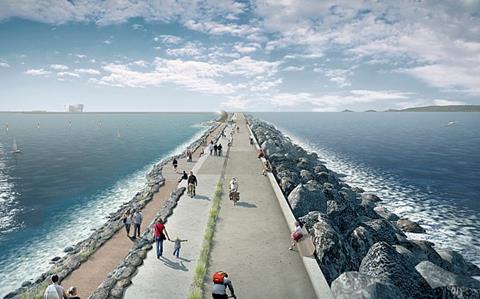If the UK is to solve the current energy and climate crises, we need some brave thinking and bold investment, says Stuart Murphy, founder of TPGen24

In 2019 the committee on climate change estimated that, by 2050, hydrogen production capacity equal to the size of the UK’s current portfolio of gas-fired power stations, will be needed to achieve net zero.
Fast-forward to 2022, with geopolitical mayhem significantly compromising Europe’s gas supply chain, and green hydrogen never looked so appealing. However, the reality is that everything is moving too slowly.
European governments know they must design out their decades-long dependence on Russia (and others) for natural gas and switch to domestically produced green energy. The challenges, as ever, are committing to the right technologies, developing the necessary building and engineering skills and shouldering huge infrastructure costs.
With climate change now a very real threat, we cannot sit on the rickety fence any longer. If we want hydrogen in the clean energy mix as a replacement for gas, we must simply accept that there will be significant upfront spending.
It will be worth it. The infrastructure required for should be welcomed, as the investment will create thousands of skilled jobs for plant and pipework – carbon capture facility construction right through to the manufacturing and installation of new HVAC systems in homes and offices.
Ramped up R&D efforts could help to create a world-leading hydrogen market, producing hydrogen more cost effectively, and without draining the electricity grid.
��ɫ����TV the UK out of its energy security and sustainability problems is the only option, but it will not come cheap. It is a classic case of pain now for huge gains later, and here is why we need to suck it up now, before it is too late.
Government’s reluctant approach to hydrogen
The business community is calling for stronger commitment to green hydrogen from the government, and they are disappointed that the government’s 2021 hydrogen strategy fails to see a largescale role for it in residential heat decarbonisation. For example, the government expects 0 to 10% of homes to use hydrogen for heating by 2035, and the heat and buildings strategy states that the government will not make strategic decisions about the role of hydrogen for heating until 2026. That is way too tardy, as the recent business, energy and industrial strategy committee report points out.
The hydrogen strategy’s aim of 5GW production by 2030 is also woefully unambitious. Clearly the £240m net zero hydrogen fund, which aims to support the commercial deployment of new “low carbon hydrogen production plants” across the UK, will not go very far.
However, it is good news that the hydrogen taskforce, set up in March 2020 and led by Shell and BP, is lobbying for the government to invest £1bn to boost hydrogen production in the UK. They argue that the UK can be home to a “world-leading hydrogen economy” by investing in hydrogen production, distribution and storage projects that could be used for transport and heating and blended into the gas grid.
Green hydrogen’s world of opportunity
And the government is not blind to these opportunities – but we need some immediate action and, dare I say it, some blue-sky thinking.
Hydrogen capture is known to be energy intensive and yields do not equal or match the amount of power required to produce it. One option is to support the nascent green hydrogen industry with potentially limitless offshore tidal range energy. This could establish a new string of offshore power islands which can also produce hydrogen at a competitive strike price, independent of the grid.

The proposed tidal lagoon project in Swansea Bay
By using a lagoon or tank-based system (like TPGen24’s systems), attached to a hydrogen plant, it becomes possible to share the same raw material – seawater. Advances have been made in electrolysing hydrogen from seawater, known as seawater splitting. Significantly, the process offers the potential for a self-sustaining resource.
The pairing is particularly attractive because it could solve the dual issues of cost-intensity and high energy use of hydrogen production in a single stroke. Once scaled up and committed to as a long-term operation, tidal-powered hydrogen capture could become self-sufficient relatively quickly.
For me, this is where new skills and infrastructure investment is urgently needed.
Run, don’t walk
Thankfully, progress is gradually being made by hydrogen pilots such as HyNet North West and Acorn CSS. However, as is the case with tidal energy, we desperately need to move on from research, trials and toe-dipping, to building a network of plants if we are to solve our planet’s deep-seated environmental issues.
What is more, we are going to be reliant on the construction workforce bringing sustainable thinking into the industry, using resources effectively, harnessing renewable, recycled and climate-resilient materials, and planning for long-term energy security.
It is therefore imperative that construction leaders and the government plan wisely, so that specifiers, contractors, engineers and project managers with the right skills in green infrastructure can play their role in the much-needed hydrogen revolution.
So let’s start steering ourselves clear of a crippling future energy and climate crisis in earnest. I can guarantee that every penny spent will be worth it in the long run.
Stuart Murphy is the founder of


























No comments yet